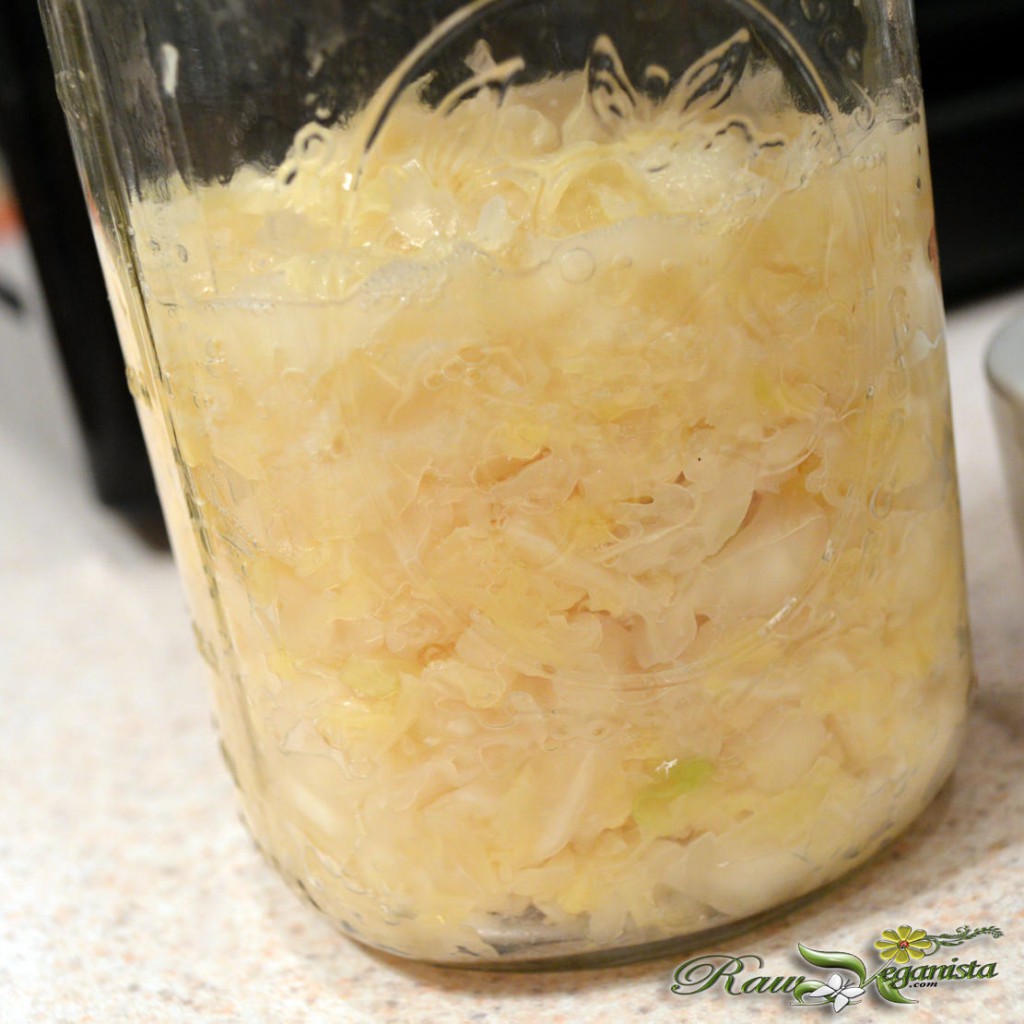Happy Spring!
In the spirit of all things fresh and green, I’ve decided to share my “Pi Day” project as part of a series of answers to commonly requested recipes. Please consider this as my St. Patrick’s Day gift to all, of which this post shall be the first installment.
This is an absolutely ideal time of year for a thorough cleanout of body as well as environment, and what better way to enjoy participation in such than enjoyment of cleansing foods made with fresh seasonal produce–especially whilst still awesome and available.
It is fairly common knowledge that sauerkraut is a regular staple in my own home, and something I make quite often in response to ongoing demand to supply for friends and clients. The basic formula outlined in this post is relatively straightforward, and can be spiced up with sliced jalapeños, fresh herbs, and just about anything else as means to create a lovely complexity of flavour to compliment a multitude of culinary whims.
Kraut is exceptionally versatile, and I even experienced a variety made with apples several years ago during a visit to Southern Ohio for an amazing vegan “World Peace & Jubilee” conference (now commonly known as “Jubilee Peacefest“). I was absolutely skeptical, even slightly afraid to try that combination, but I bravely gave it a whirl and was amazed by the depth and complexity of flavours. A surprisingly fresh Autumn treat, for which I will be forever grateful to the fine folks of Fab Ferments (who also make a killer grape kombucha)! =)
As far as my own basic recipe is concerned, I made a very small batch this time–really just enough to work well as a finishing touch on the “Raw Reuben Pizza” for which this particular item is a key element in this year’s St. Patrick’s Day festivities.
To make bigger batches, simply multiply the recipe as needed (or according to availability of supplies).
For this very simple preparation, you will need the following:
- 1 medium head cabbage (roughly chopped)
- 1 tablespoon finely ground Celtic sea salt (I buy coarse & grind with a mortar & pestle)
- Large mixing bowl (I prefer silicone or glass)
- Sharp knife (only ceramic knives are used in my kitchen–please let me know if you’re interested in some like mine)
- Chopping board (I prefer wood, which is far less likely to cause damage to ceramic knives)
- Wide mouth Mason jar(s)
Instructions for Preparation
- Place chopped cabbage into mixing bowl
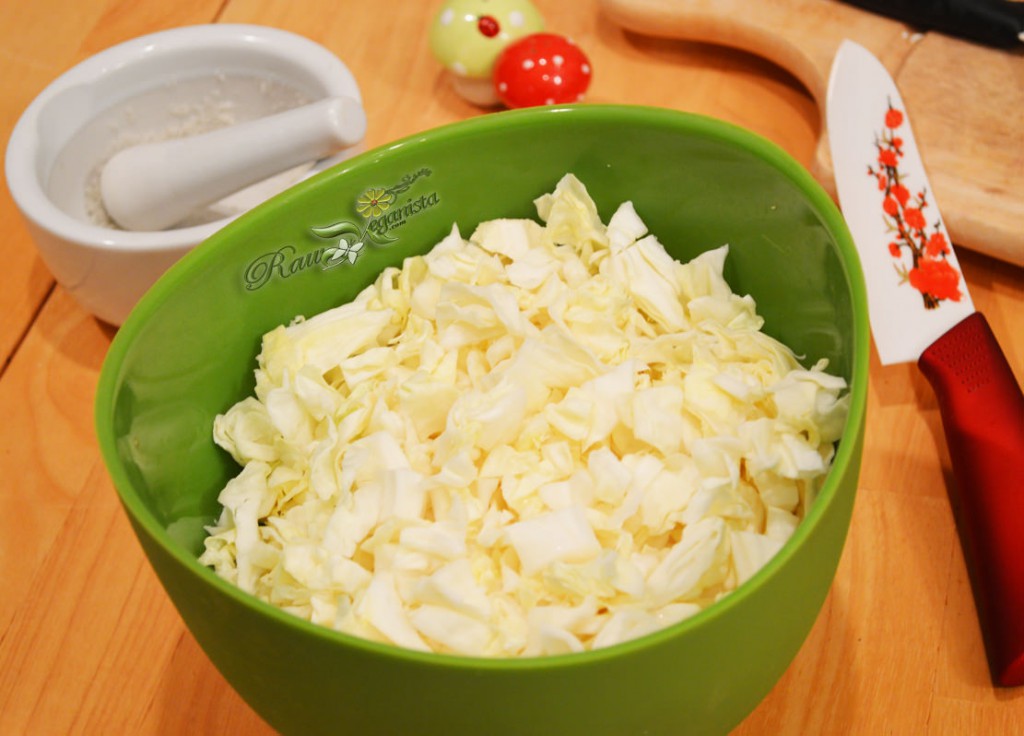
- Add salt and use both hands to massage into cabbage until leaves shed their liquid (cabbage shreds become softened and very pliable/wilted) & volume quite visibly reduced.
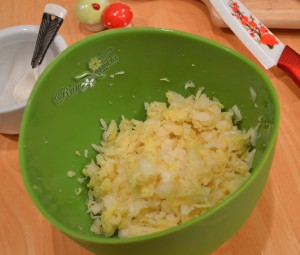
- End product should already resemble kraut, and then be transferred into a wide mouth Mason jar.
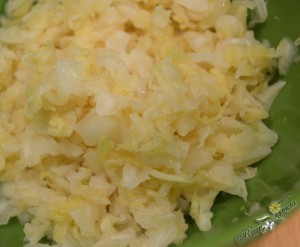
- Using hands, firmly press wilted cabbage down into the bottom of jar.
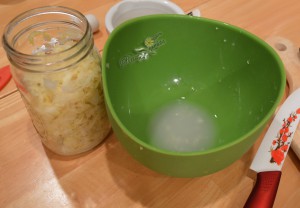
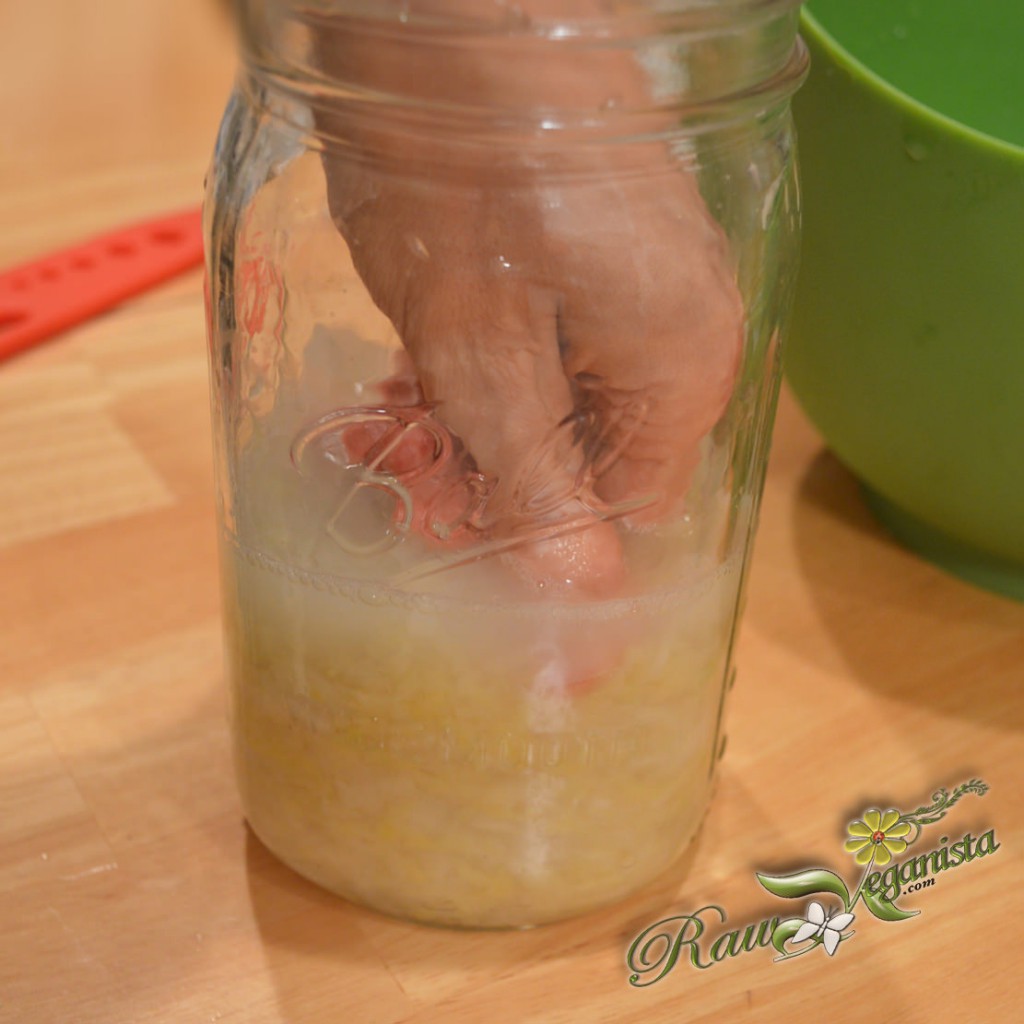
- Add remainder of cabbage-expelled liquid from bowl into Mason jar, completely covering pressed cabbage
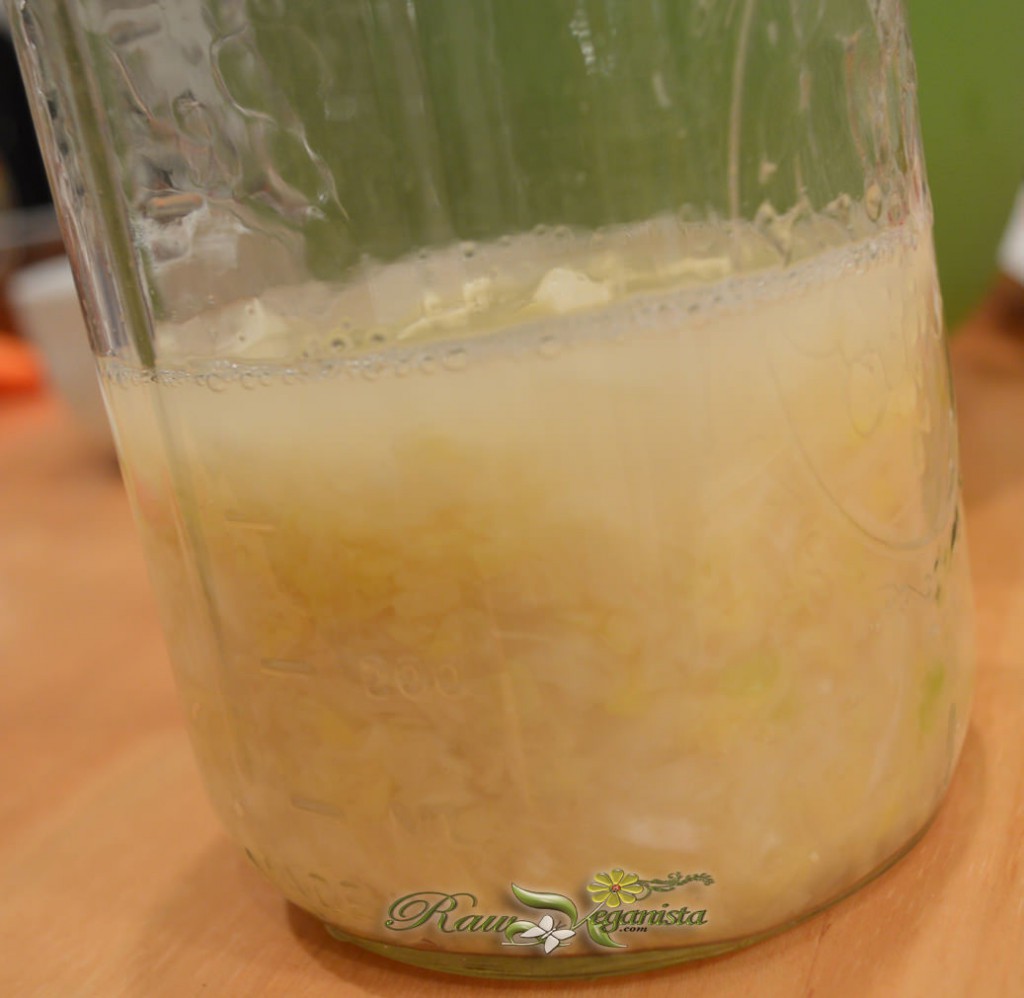
- Cover jar, and leave in a warm spot on counter to ferment (mine is presently sitting on the counter, beside the warm dehydrator as it works on drying my raw rye pizza crust).
- Check daily for evidence of fermentation (bubbles, etc), pressing down as necessary to keep cabbage submerged in liquid.*
*Regular tasting is permitted as means to check progress.
The entire process should be complete in a week’s time or less, depending upon temperature and humidity levels in prep environment (mine is actually perfect after only 3 days or so, but I keep my living environment quite warm at all times). Once your kraut has reached a point where you are satisfied with the flavour, refrigerate & enjoy as desired.

